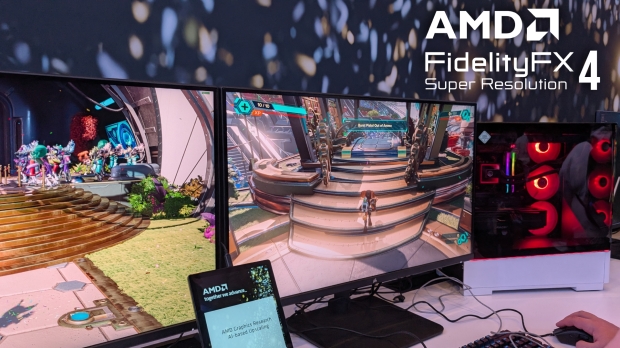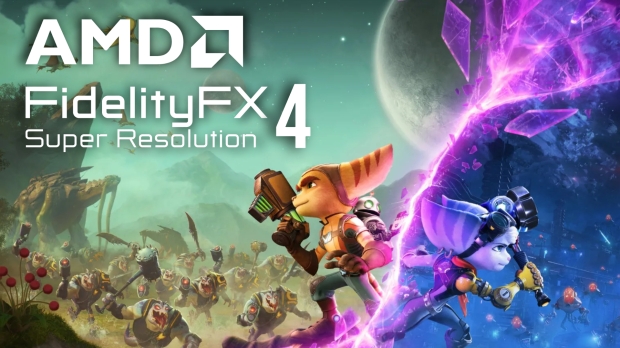AMD's RDNA 4 announcement at CES 2025 was more of a teaser than a full reveal. We all got confirmation that two new GPUs - the Radeon RX 9070 XT and Radeon RX 9070 - were on the way, with some architectural highlights. With more advanced ray tracing and AI hardware, we also got confirmation that FSR 4 is following in the footsteps of DLSS by upgrading to a new AI model for super-resolution and frame generation.

Interestingly, AMD chose not to showcase FSR 4 during its CES presentation; however, we were able to find it at AMD's booth at CES. We say find because the display was in the back with a sign that said 'AMD Graphics Research AI-Based Upscaling.' This is strange because the demonstration featured Insomniac's Ratchet & Clank: Rift Apart running on the new Radeon RX 9070.
The GPU had an 'Engineering Sample' sticker, but we saw FSR 4's new AI upscaling. And the results are not only promising but impressive. From reduced ghosting to more detail and less shimmering, it's a big step forward for FSR.
The demonstration included introducing the game running on two systems: one with the new Radeon RX 9070 and one with a previous-generation RDNA 3 Radeon RX 7000 Series graphics card. The new RDNA 4 GPU ran the game with FSR 4 enabled, while the RDNA 3 rig ran the game with FSR 3.1. We learned that both of these were using the Performance Mode preset.
When it came to image clarity and distant object detail, there was a night and day difference. FSR 4 was able to resolve the edges of distant structures and small moving objects like falling confetti. Even the characters looked better, sharper, and crisper overall. It was an impressive showing, and we would have liked to have seen AMD highlight it, as it's a definite win for the new RDNA 4 GPUs.
FSR image quality has never been up there with NVIDIA DLSS or even Intel XeSS, and we wouldn't be surprised if it's the same technology that can be found in Sony's PSSR AI upscaling solution for the PlayStation 5 Pro console. The only downside is that the move to an AI approach requires powerful AI hardware, so FSR 4 will be exclusive to RDNA 4 GPUs. Also, as FSR 4 needs to be supported in-game, we don't know how many titles will feature the tech at launch.
As for why AMD chose not to highlight FSR 4's performance, is anyone's guess, as so far, it's looking like a worthy update.








